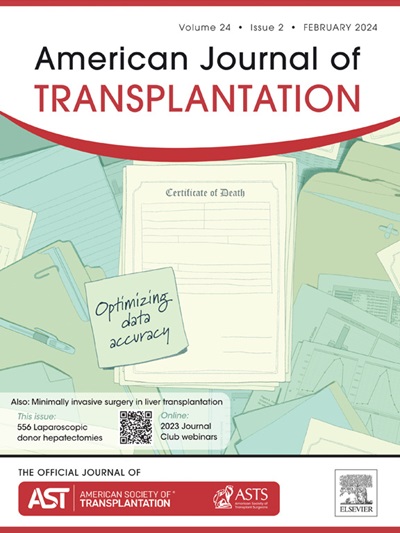个人观点:驾驭终末链肾受体选择的挑战。
IF 8.9
2区 医学
Q1 SURGERY
引用次数: 0
摘要
由于肾脏配对捐献以及凭单捐献等新举措促进了越来越多的移植手术,在美国,终末链肾脏目前在肾脏配对捐献移植手术中占有相当大的比例。有关终端链肾脏的数据很有限。与非末端链活体捐献肾脏相比,它们的质量可能较低。不过,它们可以为没有活体供体的受体候选者提供独特的机会。目前还没有数据或算法来指导移植中心选择接受末端链肾脏的受体。考虑到器官分配所遵循的实用、公正和尊重个人的伦理原则,我们讨论了三种可能的受体选择方法:1)遵守肾脏分配系统;2)效用最大化;3)优先考虑高风险候选者。类似的考虑因素也适用于非定向捐献器官受体的选择,以及已故器官捐献者的顺序外分配。由于终末链肾在美国肾脏配对捐献促进的活体肾脏捐献者移植中所占的比例越来越大,而且随着时间的推移,在医学和手术方面可能会变得更加复杂,因此需要对其利用情况和结果进行持续研究。本文章由计算机程序翻译,如有差异,请以英文原文为准。
Navigating challenges in recipient selection for end-chain kidneys
As a result of the increasing number of transplants being facilitated by kidney paired donation and newer initiatives such as voucher donation, end-chain (EC) kidneys now constitute a considerable proportion of kidney paired donation transplants in the United States. Data on EC kidneys are limited. They may be lower in quality compared with non–EC living donor kidneys. However, they can provide unique opportunities for recipient candidates without living donors. There are no data or algorithms available to guide recipient selection for EC kidneys accepted by a transplant center. Considering the ethical principles of utility, justice, and respect for persons that underlie organ allocation, we discuss 3 potential approaches for recipient selection: (1) adherence to the kidney allocation system, (2) utility maximization; and (3) priority to high-risk candidates, along with examples from our own center’s experience. Similar considerations are also relevant to selection of recipients for nondirected donor organs and to out-of-sequence allocation for deceased organ donors. Because EC kidneys represent an increasing proportion of kidney paired donation–facilitated living kidney donor transplantation in the United States and will likely get more medically and surgically complex over time, ongoing research on their utilization and outcomes is needed.
求助全文
通过发布文献求助,成功后即可免费获取论文全文。
去求助
来源期刊
CiteScore
18.70
自引率
4.50%
发文量
346
审稿时长
26 days
期刊介绍:
The American Journal of Transplantation is a leading journal in the field of transplantation. It serves as a forum for debate and reassessment, an agent of change, and a major platform for promoting understanding, improving results, and advancing science. Published monthly, it provides an essential resource for researchers and clinicians worldwide.
The journal publishes original articles, case reports, invited reviews, letters to the editor, critical reviews, news features, consensus documents, and guidelines over 12 issues a year. It covers all major subject areas in transplantation, including thoracic (heart, lung), abdominal (kidney, liver, pancreas, islets), tissue and stem cell transplantation, organ and tissue donation and preservation, tissue injury, repair, inflammation, and aging, histocompatibility, drugs and pharmacology, graft survival, and prevention of graft dysfunction and failure. It also explores ethical and social issues in the field.

 求助内容:
求助内容: 应助结果提醒方式:
应助结果提醒方式:


